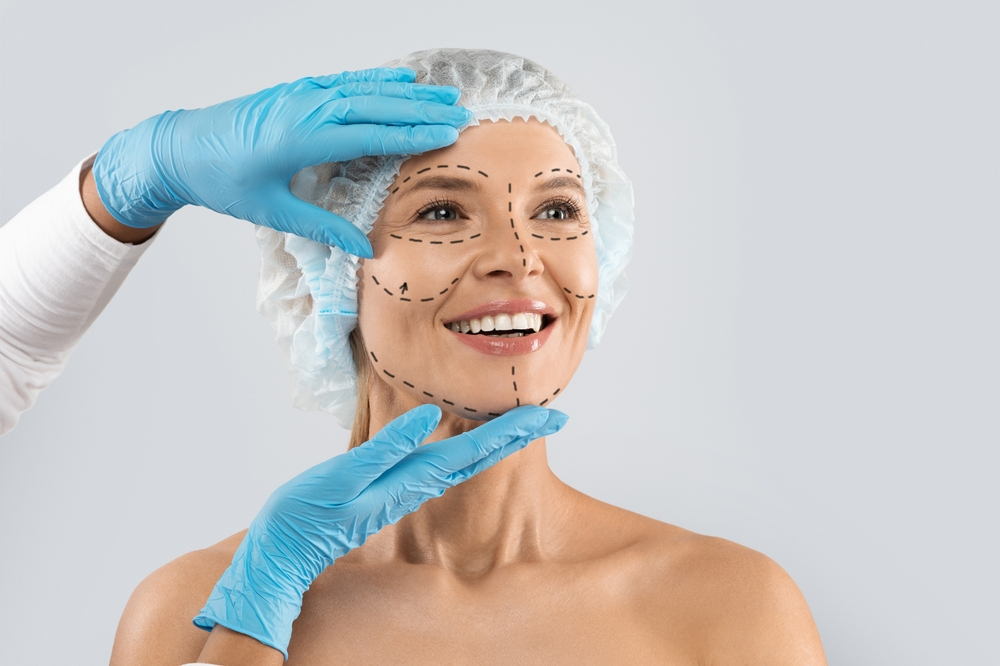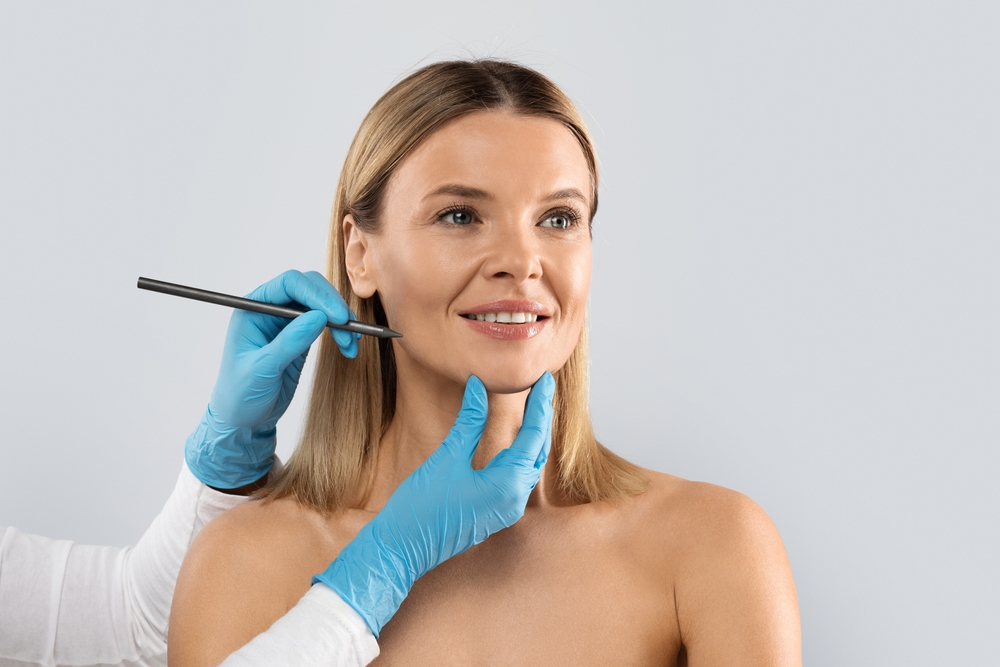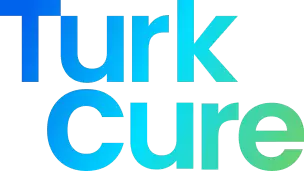As we enter middle age, our face and neck become one of the first areas to reveal the passage of time. Exposed to elements like sunlight, wind, pollution, and stress, they gradually exhibit signs of aging such as wrinkles and sagging. Fortunately, modern techniques in cosmetic surgery offer effective solutions, with facelifts in middle age being a prominent one. This procedure can easily turn back the clock by a decade or more, particularly when combined with complementary treatments like blepharoplasty for rejuvenated eyes.
Yet, amidst the allure of facial rejuvenation, numerous questions arise regarding facelift procedures. Many wonder about the ideal timing for such interventions, alternative anti-aging treatments, and the crucial decision of selecting the right surgeon. At TurkCure, a leading provider of plastic surgery services in Turkey, we address these inquiries while ensuring you receive facelift surgery of the highest quality and value in Istanbul.

Timing of facelifts in the 40s
The 40s are truly the time when the signs of aging become more prominent, especially in the face. It’s a phase where you start noticing the subtle changes, like the loss of volume and elasticity. In your 30s, you can manage these signs with treatments like Botox and fillers, but as you approach your early to mid-40s, you might find that these solutions are no longer as effective, and you begin to hit a wall with them.
When patients come into the office contemplating a facelift, they often have a clear idea of what they want. They might gesture towards their jawline and neck, pulling the skin upward, and say, “I just want it to look like this.” It’s a common gesture, a hopeful indication of their desired outcome.
They might describe it as taking a three to four-finger hand and pushing on the side of the cheek, tensioning the skin over the mandible, up to the ear, and elevating the neck. Essentially, when talking about Facelift in Middle Age they want a better-defined jawline and smoother neck skin. It’s a straightforward request, albeit expressed through a physical demonstration of lifting and smoothing, effectively indicating their desire for a facelift.

Neck Lift vs Facelift
The distinction between a neck lift and a facelift is a common topic of discussion, especially among patients considering facial rejuvenation procedures. Men often come in specifically requesting a neck lift, as they tend to focus more on the lower portion of the face and neck. They may express concerns about sagging skin or excess fat in the neck area.
On the other hand, women, particularly in their 40s, often articulate their desire for improvement in their neck area. They might say, “I just want my neck to look better.” However, upon further exploration, it becomes evident that they’re truly bothered by not just the appearance of their neck but also the loss of definition in their jawline.
This difference in approach reflects gender-specific concerns and perceptions of aging. While men may be more focused on addressing the visible signs of aging in their neck, women tend to be more aware of the overall harmony and contour of their jawline and neck area. Despite expressing their concerns differently, both genders ultimately seek solutions that restore a more youthful and rejuvenated appearance to their lower face and neck region.

Evolution of Facelift in Middle Age Techniques
It is worth talking about the evolution of facelift techniques and the pivotal role of incisions in achieving desirable outcomes. It’s noticeable that the mass, referring to the dense layer covering the facial muscles, serves as a critical focus point for effective facelift procedures. This layer ensures that the rejuvenation process targets the underlying structures responsible for facial expressions, avoiding the “wind tunnel” effect associated with outdated, skin-only facelift methods.
Unlike older techniques, contemporary facelift approaches prioritize comprehensive interventions like lower facelifts or mini facelifts. These procedures are particularly beneficial for individuals in their 40s, addressing early signs of aging in the lower face and neck regions.
The incisions for these procedures are strategically placed around the front and back of the ear, extending into the hairline to minimize visible scarring and achieve more natural-looking results. By combining precise incision techniques with advancements in surgical methods, modern facelift procedures aim to restore facial harmony and vitality while minimizing the telltale signs of aging.

Limitations of Non-Surgical Options
As we continue it is necessary to touch upon the limitations of non-surgical options for addressing facial aging, emphasizing that at a certain point, procedures like lasers and fillers may no longer provide satisfactory results. Instead, they might inadvertently create a swollen or unnatural appearance, detracting from the desired outcome. This underscores the importance of considering surgical interventions like facelifts in the middle age when non-invasive methods no longer suffice.
There are also misconceptions and stigma surrounding facelift procedures, particularly when performed in one’s 40s. Some individuals may view facelifts as something reserved for older age, overlooking the potential benefits of addressing signs of aging earlier on. This perception can lead to hesitancy or reluctance to consider facelift surgery as a viable option for achieving a rejuvenated appearance.
Contrary to these misconceptions, when performed in one’s 40s with an appropriate technique, facelifts can yield natural-looking results. The goal is not to drastically alter one’s appearance but to subtly enhance and rejuvenate facial features while maintaining harmony and balance. Moreover, advancements in surgical techniques allow for incisions to be strategically placed, resulting in minimal visibility and further contributing to the natural outcome of the procedure.
Timing & Perception of Facelifts
Waiting too long to undergo the procedure can result in more noticeable signs of aging that may be challenging to reverse completely. Patients who delay their Facelift in Middle Age by a decade or more may find that the effects of aging have become more pronounced, making the surgical intervention more conspicuous. Therefore, individuals need to be proactive in addressing aging concerns to achieve optimal outcomes and avoid the need for more extensive corrections later on.
Concealing facelift procedures can be a concern for some individuals, especially in a society where there may be stigma or judgment associated with cosmetic surgery. Unlike a quick fix like a weekend yoga retreat or a detox cleanse, facelift surgery involves a more significant commitment and may require some downtime for recovery.

Maintenance of Facelift Results
By undergoing a facelift, individuals can expect to enjoy a more youthful appearance for years to come, as the procedure addresses sagging skin, wrinkles, and other signs of aging. While the skin will still age over time, it does so from a rejuvenated starting point, providing lasting improvements in facial aesthetics. Therefore, it is essential to recognize that the natural aging process will continue over time. Factors such as gravity, changes in hormone levels, and lifestyle habits can all contribute to ongoing facial changes.
Thus, patient candidates for Facelift in Middle Age should discuss with their surgeon strategies for maintaining their results over the long term, which may include skincare regimens, periodic touch-up procedures, and healthy lifestyle choices. Moreover, considerations for future facelift procedures are essential for individuals who wish to maintain their results over the long term. For example, planning for periodic facelifts every 10 years or so can help individuals sustain their youthful appearance.

What is The Right Technique for Facelift in Middle Age?
The importance of the right technique for facelift procedures cannot be overstated, as it plays a significant role in achieving optimal outcomes for patients. Whether it’s choosing between a traditional facelift, a mini facelift, or a neck lift, ensuring that the right technique is employed is essential for achieving natural-looking results that meet the patient’s expectations.
When it comes to choosing a surgeon for your facelift journey, expertise is key, but it’s also crucial to ensure they’re well-versed in the latest facelift techniques to achieve results that match your expectations. So, when you’re checking out a surgeon’s credentials, look for signs that they’re constantly updating their skills and staying on top of advancements in facelift surgery.
A surgeon’s involvement in conferences, workshops, and publications in reputable journals are all indicators that they’re at the forefront of innovation in the field. These credentials not only reflect their commitment to continuous learning but also reassure you that you’re in good hands for your facelift procedure.
Common Complications in Facelift in Middle Age
Mentioning common complications versus less likely scenarios during pre-operative discussions helps you as a patient to understand the spectrum of possible outcomes associated with surgery.
While a surgeon must inform you about potential risks such as infection, bleeding, or adverse reactions to anesthesia, it’s essential to strike a balance between providing comprehensive information and avoiding unnecessary alarmism.
By focusing on common complications and their management, surgeons can address your concerns while instilling confidence in the surgical process.
How Are Mid-Face Lift Procedures?
Mid-face lifts target the region between the lower eyelids and the mouth, addressing sagging cheeks, hollowing under the eyes, and nasolabial folds. By lifting and repositioning the underlying tissues, mid-face lifts restore youthful contours and enhance facial harmony. These procedures have gained popularity for their ability to achieve natural-looking results with minimal scarring, making them a preferred option for patients seeking facial rejuvenation.

Blepharoplasty & Mid-Face Lift Procedures
The link between blepharoplasty and mid-face lift procedures is crucial in understanding their combined benefits for facial rejuvenation. While blepharoplasty targets excess skin and fat around the eyelids, mid-face lifts focus on rejuvenating the central face, including the cheeks and lower eyelids.
Although these are separate anatomical areas, they work together to create facial harmony and balance. By addressing both areas concurrently, surgeons can achieve comprehensive rejuvenation, restoring a youthful appearance to the eyes and mid-face region.
Surgeons typically access the mid-face through a trans-conjunctival approach, entering through the inside of the eyelid to reach the orbital rim. This approach allows for precise manipulation and repositioning of underlying tissues, including the malar fat pads and zygomatic bones, effectively lifting and restoring volume to the cheeks.
In addition, the frontal bone, situated above the eyebrows and within the scalp, serves as a crucial landmark for mid-face lift procedures. Surgeons make discreet incisions in the hairline to access this area, ensuring precise dissection and manipulation of underlying tissues. By simplifying medical jargon and explaining anatomical landmarks, surgeons ensure patients understand the procedure and its goals.
Lastly, surgeons utilize a subperiosteal dissection technique, carefully releasing and lifting soft tissues from the underlying bone. This minimally invasive approach reduces trauma to surrounding structures and promotes natural-looking results with minimal scarring.

The Endotine Device
The utilization of the endotine device in cases of heavy cheeks provides a robust lift and support, whereas thinner patients may require alternative techniques like sutures fixation when applying for Facelift in Middle Age. Adapting the technique to each patient’s unique needs optimizes outcomes and minimizes post-operative discomfort.
Thinner patients may experience prolonged discomfort or awareness of the endotine device due to slower absorption rates. This inconvenience underscores the need for alternative approaches or device modifications to improve the overall patient experience. Accelerating absorption rates in absorbable devices could alleviate discomfort and enhance patient satisfaction.
Explaining the suture fixation technique for thinner patients offers an alternative approach to achieving the desired lift and support without relying on absorbable devices. Anchoring sutures into the periosteum secures tissues in place and yields natural-looking results, emphasizing the importance of personalized treatment plans.
On the other hand, considerations of patient qualification for mid-face lifts and their combination with other procedures highlight the significance of patient selection and surgical planning. Ideal candidates typically exhibit signs of aging in the mid-face region, such as sagging cheeks or hollowing.
Surgeons may recommend combining mid-face lifts with procedures like blepharoplasty or brow lifts for comprehensive facial rejuvenation.
Emphasizing the recovery process and the need for patience as the face settles post-surgery underscores the importance of post-operative care. Patients may experience swelling, bruising, and temporary changes in facial sensation, requiring patience during the healing process. Adhering to post-operative instructions and attending follow-up appointments are crucial for optimizing outcomes.
You might be interested in:

